Read Reviews
The Best Shed Heaters
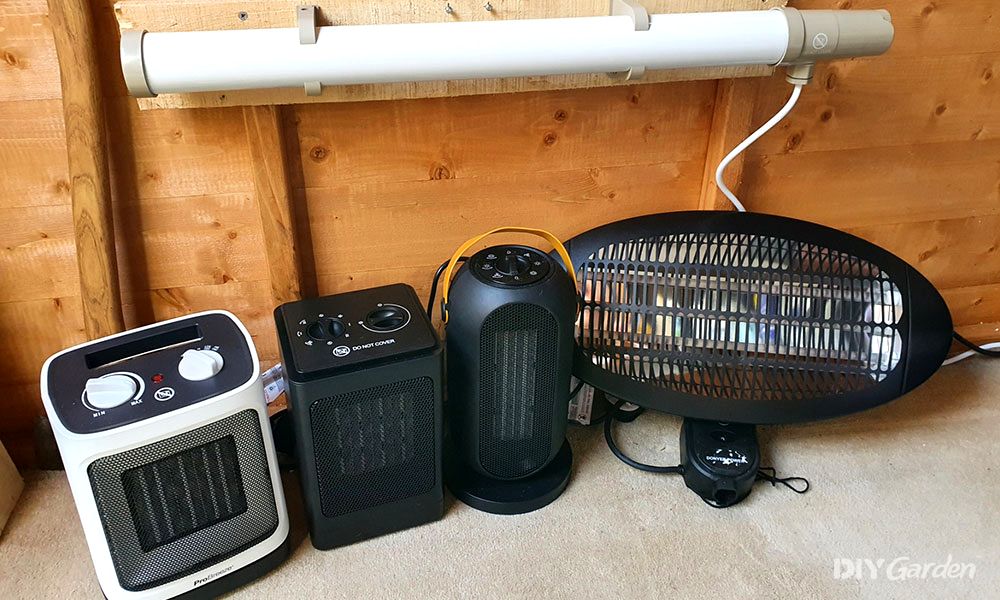
-
Best shed heater overall - ProBreeze Mini Ceramic Fan Heater
-
Best compact shed heater - Dreo Space Heater Atom One
-
Best for large sheds - PELONIS Electric Space Heater
-
Best for quiet operation - Dreo Space Heater Solaris Slim H3
-
Best wall-mounted shed heater - DONYER POWER Wall Mounted Infrared Space Heater
Shed Heater Reviews
1. ProBreeze Mini Ceramic Fan Heater[ SAVE 3% ]
Best shed heater overall
- Efficient at quickly heating small spaces - heat output can raise temperature by 10°C in 30 minutes (in a 7 m³ area)
- Built-in thermostat switches heater off and on automatically in order to save energy
- Case does not get too warm or hot to touch
- Choice of two heat settings makes it easier to conserve energy when desired
- Red light makes it easy to tell from a distance whether the heater is switched on
- Noisy fan reaches around 63 dB which could be distracting during certain jobs
- Small oscillation arc of 60°
- No cool fan setting means this is only useful during cold weather and doesn't double up as a fan for summer
- Power Source
- Corded Electric
- Power
- 2000W
- Heat Settings
- 2
- Weight
- 1.75kg
- Design
- 4
- Practicality
- 4
- Energy efficiency
- 4
- Safety
- 5
- Value for money
- 4.5
As a company that design all sorts of clever kit, aimed at making your home more comfortable, it’s no surprise that ProBreeze make the best shed heater that I tested.
Their ProBreeze Mini Ceramic Fan Heater is more than enough for a small shed, with a maximum heat output of 2,000 W to play with.
It wasn’t that cold when I tested this electric heater, with 11° C outside, and a balmy 14° C inside. However, the superior firepower of this little portable heater was extremely noticeable. With temperatures leaping up 10°C in just 30 minutes, I wish I’d tested this out when it was 0°C outside. By the end of the test, it was 24° C inside and still rising. The heat output is definitely palpable.
Encased by smart white plastic, this is a rather good looking piece of kit. You get two dials on top to select the power levels and oscillation, and another one that works as a temperature control.
Boasting an impressive 2,000 W of power on its ‘high’ setting and 1,000 W on ‘low’, this garden shed heater has certainly got the power to heat up a small space. Unfortunately, you can’t use it as just a cooling fan in the summer unlike some of the other electric heater fans on the market. Also, it only oscillates through 60° so I felt it could have achieved more heat dispersion if it moved further.
Even though this electric heater lacks a fan mode for those hot summer evenings, it’s still a very practical bit of kit.
It’s a portable heater that’s easy to pick up and take with you which is useful when moving between different areas. Plus, thanks to the strong power output it won’t take long to heat up a small room.
However, one thing that might put you off this mighty 2,000 W heater is the noise output. I measured it to around 63 dB, which equates to the same noise as ‘conversation in a restaurant’ – quite a bit of background noise! Unfortunately, it’s a fair bit noisier than the other fan heaters and a lot harder to ignore.
This is the downside of having more powerful fan.
The temperature control dial is what makes this a very clever and energy efficient heater.
There’s an efficient built-in thermostat, so setting the dial between ‘min’ and ‘max’ will control how warm the room gets before the heater switches off automatically. Once the thermostat senses a drop in temperature, it pings back on, saving you from running the heater constantly.
Nevertheless, it is worth bearing in mind that on its high setting, this powerful fan heater will eat up electricity.
The ProBreeze is fitted with several safety features. It has anti-tip technology, which is relatively common in modern-day fan heaters. Plus, it has a wide trigger leg as well, so it will work happily on soft surfaces. The white textured case doesn’t get hot during operation either, which is a welcome touch.
Also, it’s only a little thing, but you also get a little red light to tell from a distance if the heater is switched on. It’s not a huge safety upgrade, but it might save you from bending down to check.
There’s automatic overheat protection built in as well.
This electric fan heater is slightly more expensive than the others that I tested. However, it’s also the most powerful fan heater, so at least it gives you a bit more bang for your buck. The build quality is good, and the ceramic heating element works very well.
When it comes to electric heating, it seems to be a simple case of the higher the Wattage, the more heat is produced. So, if you’re looking for the best fan heater to heat a small space, and are not overly concerned with price, this is a great option to consider.
Do bear the noise of the fan in mind though – it might be distracting if you’re trying to concentrate.
Did you find this review helpful?
2. Dreo Space Heater Atom One[ SAVE 20% ]
Best compact shed heater
- Ultra compact so a good option for smaller sheds without a lot of space
- Remote control works up to 8 m away
- Two energy saving functions: thermostat and 12-hour timer
- 70° oscillation helps distribute warmth around the room
- Touch screen LED display is easy to use
- Metal grid at the front of the heater can get very hot to touch
- Highest power fan setting is fairly noisy
- Power Source
- Corded Electric
- Power
- 1500 W
- Heat Settings
- 3
- Weight
- 2.15kg
- Design
- 4
- Practicality
- 3.5
- Energy efficiency
- 4.5
- Safety
- 5
- Value for money
- 4
The Dreo Space Heater Atom One is a compact heater that’s ideal if you’ve got a small shed. This small heater measures just 17 x 14 x 26.2 cm and weighs just over 2 kg yet is capable of heating sheds up to 22 m³ in size.
This heater has three heat settings: 1500 W, 1000 W and 900 W. On top of this, there are two modes: eco and fan-only. The eco-mode adjusts the power based on the ambient temperature and the fan-only mode can be used to cool your shed in the summer months. The heater oscillates through 70° allowing an even spread of air.
For easy operation, this heater comes with a remote control that works up to 8 m away. There’s also a touchscreen LED display on the unit.
There are a couple of features that help improve this heater’s energy efficiency. The first is an adjustable thermostat which allows you to set your preferred temperature from 5 to 35°C.
On top of this, there’s a 12-hour timer so you don’t have to worry about forgetting to turn the heater off. It will also automatically turn itself off after 12 hours of inactivity.
Safety features include a tip over switch and overheat protection.
All in all, this heater is a great choice for smaller sheds thanks to its compact design and light weight. The energy efficiency and safety features mean you don’t need to be constantly keeping an eye on it.
Did you find this review helpful?
3. PELONIS Electric Space Heater[ SAVE 45% ]
Best for large sheds
- Provides instant heat in cold weather
- Capable of heating medium/large spaces in a reasonably short time
- Thermostat can be adjusted to help control the energy consumption
- Runs a little noisily so may disturb you if you use your shed as a workshop or office
- Power Source
- Corded electric
- Power
- 2000 W
- Heat Settings
- 2
- Weight
- 2.7kg
- Design
- 4.5
- Practicality
- 4.5
- Energy efficiency
- 4.5
- Safety
- 5
- Value for money
- 4
If you’ve got a large shed that needs heating, the PELONIS Electric Space Heater has a powerful 2000 W heat output and can heat areas up to 35 m². It’s a great option for garages, sheds or workshops that get especially chilly.
The heater is equipped with an eco mode that can help make it more energy efficient. It intelligently adjusts the heat output depending on the room temperature and will choose between the maximum 2000 W output or a lower setting of 1200 W. There’s also an adjustable thermostat which can is set using a simple control dial.
This heater provides instant heat in seconds, and oscillates through 75° so the hot air is evenly spread around larger rooms.
There’s an 8-hour timer, so you can set the heater to turn off after a certain period. Also, it will automatically turn off after 12 hours of inactivity to avoid the heater being left on by accident.
The heater is easy to control using the built-in touch-screen LED panel, but there’s also a remote control included for changing settings from afar.
All things considered, this is one of the best shed heaters if you’ve got a larger space to heat. It has a powerful energy output and useful features such as the eco mode and adjustable thermostat.
Did you find this review helpful?
4. Dreo Space Heater Solaris Slim H3
Best for quiet operation
- Adjustable thermostat allows you to keep shed at the optimum temperature without wasting energy
- Generates a surprising amount of heat given the compact size
- Runs very quietly at just 40 dB so shouldn’t disturb you if you use your shed as a workshop or office
- Oscillates smoothly through 70°, evenly distributing the heat around the room
- Comes with a remote control so the settings can be adjusted from up to 8 m away
- Not powerful enough to heat very large spaces
- Not completely silent due to fan
- Power Source
- Corded electric
- Power
- 1800 W
- Heat Settings
- 3
- Weight
- 2.72kg
- Design
- 5
- Practicality
- 4
- Energy efficiency
- 4.5
- Safety
- 5
- Value for money
- 3.5
If you use your garden shed as an office or workshop, you may not want a heater blasting away noisily. Thankfully, the Dreo Space Heater Solaris Slim H3 has made this list thanks to its quiet operation. Running at just 40 dB, this heater is almost as quiet as a library.
With oblique airflow technology, wind noise is greatly reduced. According to Dreo, this heater is 12% quieter than traditional electric heaters, so you can work undisturbed. The heater is audible, but it produces quiet white noise which shouldn’t be too disruptive.
Operating at 1800 W, with additional heat settings of 900 W and 1100 W, this heater is perfect for small-to-medium (15-25 m²) sheds. It oscillates smoothly through 70°, evenly distributing heat around the space.
There’s also an eco-mode, which will select the right power depending on the ambient temperature, and a fan-only mode.
You can set the adjustable thermostat from 5 to 35°C and there’s also a programmable 12-hour timer. Also, in case you leave the heater on accidenally, it will automatically switch off after 24 hours of inactivity.
This heater also comes with a remote control, with an 8 m range, so you can adjust the settings without leaving your chair.
Overall, this is one of the best shed heaters if you’re looking for a quiet fan heater that won’t disturb you while you work.
Did you find this review helpful?
5. DONYER POWER Wall Mounted Infrared Space Heater
Best wall-mounted shed heater
- Powerful heat output is enough to raise temperature by 11°C in 30 minutes (in a 7 m³ area)
- Useful if short on room as wall-mounted design is not using any floor or desk space
- Can be mounted out of reach of pets and children
- Three heat settings mean there is some control over power usage
- Silent heater will not distract from work or listening to music
- As soon as the heater is turned off, a dramatic reduction in heat can be felt
- Power cable is a little short at 1.8 m which may be inconvenient for mounting the heater high up on a wall
- Mounting plate may bend easily - could be of higher quality
- Power Source
- Corded Electric
- Power
- 2000 W
- Heat Settings
- 3
- Weight
- 2kg
- Design
- 4
- Practicality
- 3.5
- Energy efficiency
- 3.5
- Safety
- 5
- Value for money
- 4
From my testing, the DONYER POWER Space Heater came out as the best shed heater if you want a wall mounted option.
Featuring three power levels and a flexible heating element, it delivers efficient heating and is an absolute beast when it comes to pumping out heat. There’s a simple reason for this – on ‘high’ it produces a massive 2,000 watts!
I tested this electric heater when there was an outside temperature of 0°C and an inside temperature of 3°C (the coldest night in the shed, by the way). This heater brought the temperature up by 11°C in just 30 minutes. It took just over an hour to reach the target temperature of 20°C, which was rather impressive!
This halogen garden heater looks similar to the ones that they put on the wall in a pub garden. It’s a surprisingly light bit of kit, with three heating elements that deliver an impressive heat output. Operated with a pull cord, it clicks through three settings: 650 W, 1,300 W and 2,000 W.
It was easily mounted on my shed wall with four screws (included with wall plugs), but the mounting plate was rather thin and bent easily. For this reason, I’ve docked a point.
You can get a different version of the same heater with a tall stand, but one of the best things about this heater is that it’s up off the floor and not taking up any precious space.
If you can hang a picture on a wall without any problems, you can mount this electric heater in your shed. You simply remove the mounting plate from the back of the heater, screw it into the wall, and then reattach the heater. Simple!
I found the heater itself to be extremely practical. It doesn’t have a fan, so it’s silent, and with three heat levels you can decide how much heating power you need at any time. It provides near instant heat as soon as it’s turned on.
The only problem comes with the short power lead. Measuring just 1.8 m, it wasn’t quite long enough, considering it’s a wall-mounted item. I could position the heater at the top of the wall without resorting to an extension lead.
The beauty of having three different power levels is that you easily adjust the heat output. You can blast the room with three bars of 2,000 W heat to take off the chill, then knock it down to 650 W to keep it warm until the temperature drops again.
Unfortunately, being an infrared heater, as soon as you switch it off – you feel the cold air. This is a bit of a problem when the weather is cold out because you wouldn’t want to run this heater on full power all day long to benefit from constant heat – the cost would rack up.
As this is technically a patio heater and space heater, it’s perfectly capable of working safely both indoors and outdoors. Thanks to an IP24 rating, it’s protected against accidental splashes of water too. This means it’ll be happy sitting in a garden shed that might be a bit damp sometimes.
You can mount it high up on the wall, away from curious children and animals too.
In terms of additional safety features, it will cut out if it starts to overheat.
For the money, I rate this as an outstanding way to heat up a small shed. It’s not enough on its own to get a large internal area up to anything near 20° C, but its heat output made a noticeable difference in my 7 m³ space.
If you run it on its highest heat output (level 3) all day long, it will start to add up on your electricity bill. Keep it on low, and you’ll be a little bit better off.
Did you find this review helpful?
Product Tester
To find you the best shed heaters available on the market, I tested and studied several different models and rated them based on their overall design, practicality of use, energy efficiency, safety features, and value for the money spent. These are the different factors I examined when testing each of those important elements:
- Design: To assess the design of the heaters, I tested how fast it heated up the shed to my desired temperature (20°C), how well it spread the heat around by examining the degree of oscillation, and how big of a space the heater could heat. Those that were able to heat large as well as smaller sheds got a better rating. I also looked at the manual controls, whether they had an LED touchscreen and remote control options, and how easy they were to use. I looked at how compact each heater was, as a compact design of around 20 x 20 x 40 cm or less is most suitable for the average user, how aesthetically pleasing the design was, and how noisy the model was. If it was noisy (over 60 decibels), it got a lower rating than quieter models (40 – 45 decibels).
- Practicality: For practicality, I looked at whether or not the heater can be used as a cooling fan in the summer, allowing for all-season use, how portable it is for use in other buildings or spaces, and how quickly it can heat up a room when it is needed. Those with remote controls for ease of operation were also rated higher. I also looked at how quickly the room became cool when the heater was shut off, which was a concern with infrared models. Finally, those with built-in frost protection to turn on when the temperature dropped below a certain point got a higher rating.
- Energy Efficiency: For energy efficiency, I looked at whether or not it had a built-in thermostat so that it would shut off when a desired temperature was reached; those without a thermostat got a lower rating. Those with a timer or an automatic shut-off after a certain period of use got a better rating since there is no risk of leaving it on and forgetting about it. I also examined whether it had eco-settings and different wattage output settings (for example, 2000 W and 1000 W settings, or does it have a third setting, or only one setting) and its overall energy use when set to high.
- Safety: Those with features like anti-tip technology and built-in overheat protection got higher safety ratings than those without. I also looked at how hot the outer surface of the heaters gets in case you need to or accidentally touch them. Models with accidental splash protection from water also got a higher rating since those would be very useful for damp garden sheds where you might otherwise not want to use a heater.
- Value for Money: To identify a heater’s value for money, I asked the questions: How fast does it produce heat and heat up the entire room, and how big of a room will it heat for the price? Heaters with excellent performance but that were still affordable were given the best ratings.
Compare Product Features
Use the dropdown to sort the table by the feature you want to see.
ProBreeze Mini Ceramic Fan Heater
- 4.3
- Corded Electric
- 2000W
- 2
- 1.75kg
Dreo Space Heater Atom One
- 4.2
- Corded Electric
- 1500 W
- 3
- 2.15kg
PELONIS Electric Space Heater
- 4.5
- Corded electric
- 2000 W
- 2
- 2.7kg
Dreo Space Heater Solaris Slim H3
- 4.4
- Corded electric
- 1800 W
- 3
- 2.72kg
DONYER POWER Wall Mounted Infrared Space Heater
- 4
- Corded Electric
- 2000 W
- 3
- 2kg
How to Choose The Best Shed Heater
Whether you use your shed as a home office, or want somewhere to warm up after a cold morning gardening, there are plenty of low-cost garden heaters that will keep out the chill. Heaters can also ensure that plants, tools and paint don’t freeze during winter.
They don’t have to be used exclusively in sheds either, and can be a valuable addition to garages, summerhouses, conservatories and greenhouses as well.
READ NEXT: How to Insulate a Shed
There are several types of space heater to choose from, including: electric radiators, fan heaters, halogen heaters, tubular heaters, propane gas heaters and paraffin heaters. Many of these are very efficient and don’t cost too much to run.
A paraffin heater or gas heater will allow you to heat a shed or greenhouse to keep it above freezing even if you don’t have an electricity supply to the building.
Finding the best shed heater will depend what you need it for, so the following information should help you work out which one to choose:
The Different Types of Heater
There are several different types of garden heater. They all have different attributes and varying advantages and disadvantages. Here are the different styles of space heater available and what they’re best used for:
Electric Heaters
You’ll be spoilt for choice when it comes to choosing an electric space heater as there are loads of styles available.
Electric Radiators
Electric radiators are generally considered to be the most energy efficient type of convection heater. Heaters that use convection warm up the air in a room, instead of just heating up surfaces via radiant heat whilst they’re on. As a result, when using an electric radiator, the overall temperature of the room will increase.
Even when the radiator is switched off, the room will remain warm for some time (depending on how draughty it is) which helps these heaters be energy efficient. This isn’t the case with space heaters that use radiant heat.
Electric radiators are a safe, versatile and cost-effective way to provide heat in a variety of situations.
Fan Heaters
An electric fan heater provide instant heat and can warm up a small room relatively quickly. They’re good at circulating air, and work continuously to heat cold air and create warm air.
However, an electric fan heater is more power hungry than a lot of other space heaters. The electric fan tends to use a lot of energy, and so does heating the air. This means they are more suitable for quick blasts of heat for short periods, rather than keeping a room warm all day.
If you buy an electric fan heater, you should be careful about power consumption – it can be tempting to leave them on for long periods which can wind up being quite expensive. Look for an electric fan heater with a thermostat to help keep costs down; these will save on power by turning off when the desired temperature is reached.
READ NEXT: The Best Fan Heaters
Halogen Heaters
These heaters use halogen bulbs to provide heat. They’re infrared heaters and are often used in outdoor pub areas. Smaller versions are available for home heating.
They use radiant heat, which means they heat surfaces instead of the air. As a result, you will feel warm when sitting in the glow of infrared heaters, but cooler as soon as they’re turned off.
A halogen heater is generally relatively cheap to run, and if they come with two or more bulbs, you can choose how many bulbs to have on, and therefore how much power to use. This gives you control over how much it will cost to run your halogen heater.
Often, halogen bulb heaters come with some built-in safety features, so this is something to look out for. For example, many will cut out if they are tipped over or fall.
Infrared heaters with halogen bulbs require some maintenance because the bulbs will need to be replaced from time to time. However, halogen bulbs are generally long lasting.
READ NEXT: The Best Halogen Heaters
Low-Energy Tube Heaters
If you simply want to keep a room or outbuilding frost free, then a low-energy tube heater is a good option to consider.
These are designed to provide steady heat and protect rooms from frost, condensation and damp. If you need to keep your greenhouse, shed or garage frost free then these are a simple, low-cost solution.
They are best used in relatively small sheds, no bigger than 2.4 x 1.8 m (8 x 6 ft); however, more than one tube heater can be used if you have a larger space.
They will not make the shed feel particularly warm, and probably won’t turn it into a comfortable environment to work in during winter, but they can protect plants from frost and stop tools from being damaged by freezing temperatures.
Paraffin Heaters
Paraffin heaters are the best garden heaters to buy if there is no electricity supply available.
Paraffin heaters are also referred to as kerosene heaters; paraffin is a slightly more refined form of kerosene.
Paraffin/kerosene heaters are cheap to buy, simple to use and reasonably cost-effective to run. Modern paraffin heaters are also relatively safe to use, though you should follow all instructions and safety guidelines provided by the manufacturer carefully. One drawback is that you will have to buy, store and safely dispose of paraffin, which can be an extra fuss for those who aren’t used to doing so.
Paying an electrician to install an outside mains power supply in the garden might be worth considering. This can make many aspects of gardening easier, not just heating. As well as giving you the option to use electric heating outside, an outdoor socket can be useful for running power tools and lighting as well.
Gas Heaters
Gas powered heaters run on either butane or propane gas. Butane and propane heaters are another good option if there is no electricity supply. However, gas heaters shouldn’t be used in enclosed areas so they are not as effective for keeping a shed warm (particularly whilst you are working in it).
You’ll need to keep a window or door open for ventilation with butane/propane heaters which can negate the reasons for using a space heater in the first place.
Convection or Radiation Heaters
Not all heaters go about heating in the same way.
Heaters that use ‘convection’ heat up the air around the heater. Once that air is warm, it rises pushes cooler air out of the way. This process creates a cycle of warm air moving through the space.
Heaters that heat via convection: electric radiators, fan heaters, tube heaters and paraffin heaters.
On the other hand, heaters that use ‘radiation’ do not focus on warming up the air. Instead, they use direct heat to warm any objects in front of them.
Heaters that heat via radiation: halogen heaters.
As a result, convection heaters are generally better for heating a room, whereas radiation heaters are better at providing quick blasts of direct heat when you feel you need it.
READ NEXT: The Best Wall Mounted Panel Heaters
Safety Precautions
Be aware that there are some health concerns connected with using a paraffin heater in an enclosed space. Mainly because, through their process of fuel burning, they release pollutants such as carbon monoxide, nitrogen oxides and sulphur dioxide. As a result, it is generally recommended to use these heaters with a window open.
Avoid leaving heaters switched on and unattended as much as possible. Although many of the best heaters have safety functions, generally meaning they will turn off if they start to overheat, you can never be too careful when it comes to a heating device.
Shed Heater FAQs
To keep an area frost free, low-energy tube heaters are a good option to consider. Electric tube heaters are an efficient heating option that cost very little to run and are capable of keeping small spaces, like garages, above 0°C. Depending on the size of your space, you may need to buy two. This is often the case in areas that are bigger than 2.4 x 1.8 m (8 x 6 ft). These electric heaters can be wall mounted or floor standing, and you can also buy protective metal housings for them – this can be a good idea if there is a chance that children or pets will come near them.
There are a couple of options that will work in this situation. You should bring the rabbit hutch inside, into either a shed or garage and work on heating the space to keep the hutch warm.
Make sure that whichever heating option you choose is safe to use in an enclosed space. The first option to consider is a low energy tube heater that will keep the room frost free. Low energy electric heaters will keep the temperature inside a small shed above 0°C even when the temperature outside is below freezing. Metal housings can be bought for these to make sure pets and children can’t get too close to them – they get quite hot to the touch.
The other option is to use an oil-free radiator with a frost-free setting which will also be safe and economical to run.
Damp, freezing conditions can have an adverse effect on a range of items in your shed. Paints can freeze, metal tools can rust, and plastic parts can become brittle. In addition, the grease and other lubricants in power tools can freeze as well.
You only need to keep the shed just above freezing to prevent this damage, so should look for a heater that will protect the space from frost. Low-energy electric heaters are normally the most cost-efficient and effective way to do this.
Before using any tools, you should allow them to warm up to room temperature.
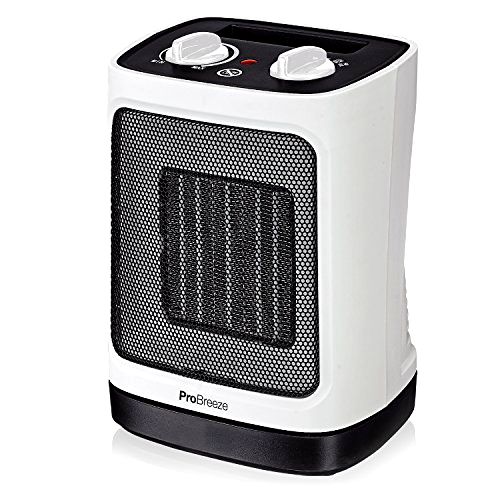
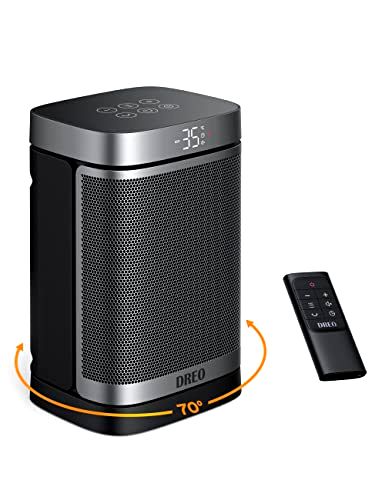
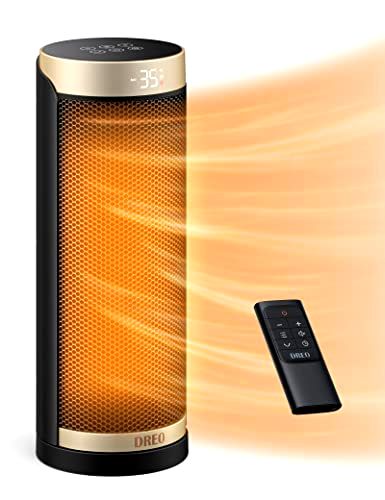

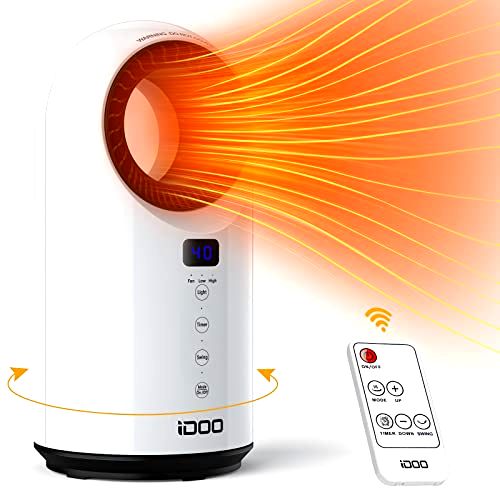
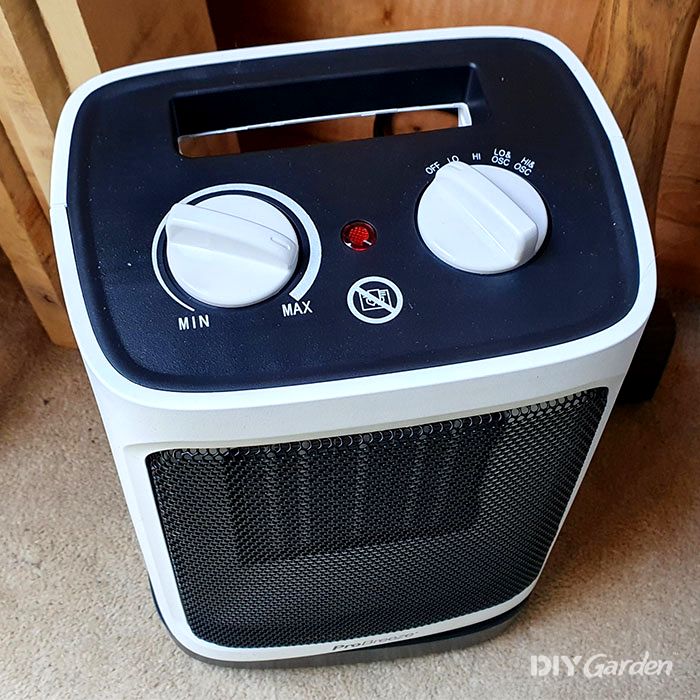


Share